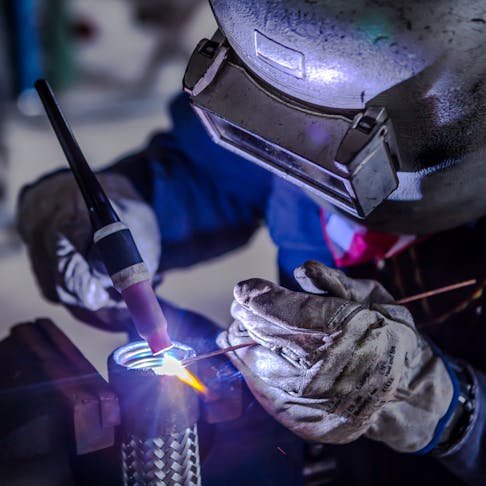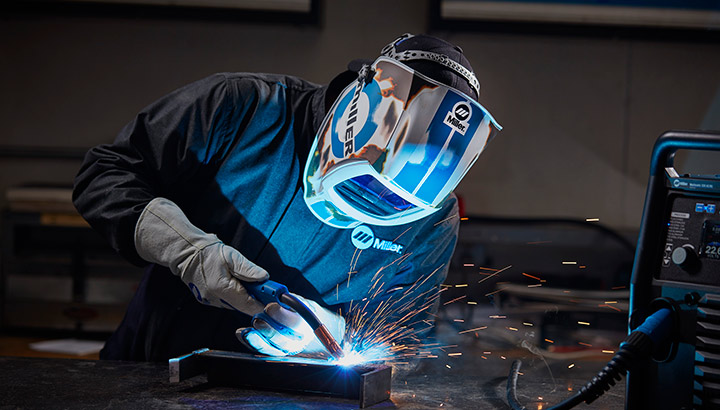Recognizing Welding WPS: Comprehensive Guide for Welders
Wiki Article
The Ultimate Guide to Welding WPS Procedures: A Detailed Introduction for Welders
In the complex globe of welding, Welding Procedure Specifications (WPS) serve as the backbone of making sure high quality, uniformity, and safety and security in welding procedures (welding WPS). As we dig into the various components of a WPS and discover the complexities of certification and accreditation, we will uncover the important duty these treatments play in the world of welding.Value of WPS Procedures
Understanding the importance of Welding Procedure Specs (WPS) treatments is critical for guaranteeing the quality and integrity of bonded frameworks. WPS procedures serve as a roadmap for welders, outlining the necessary actions, specifications, and materials required to attain an audio weld. By sticking to WPS standards, welders can make certain uniformity in their work, leading to reputable and structurally sound welds.One of the key reasons why WPS treatments are important is their function in keeping weld quality and integrity. Complying with the defined welding parameters and strategies detailed in the WPS aids prevent issues such as porosity, splitting, or insufficient blend, which can jeopardize the toughness and longevity of the weld.

Components of a WPS
A Welding Treatment Spec (WPS) typically consists of important elements that detail the details needs for executing a weld, ensuring uniformity and high quality in the welding process. The essential components of a WPS consist of necessary variables such as base metals, filler metals, interpass and preheat temperature levels, welding processes, protecting gases, welding settings, and post-weld heat therapy requirements.Base metals refer to the products being joined, while filler metals are utilized to load the void between the base metals throughout welding. The welding procedure outlines the particular technique to be utilized, whether it's gas metal arc welding (GMAW), protected metal arc welding (SMAW), or one more technique. Welding positions specify the alignments in which welding can be performed.

Certification and Accreditation
Having established the important components of a Welding Procedure Specification (WPS), the focus now shifts towards the vital facets of credentials and accreditation in welding practices.
Accreditation, on the various other hand, is the formal acknowledgment of a welder's certifications by a pertinent qualification body or company. Welding qualifications are typically based on the certain welding processes, products, and positions a welder is qualified to function with. Holding a valid welding certification shows that a welder meets market standards and is competent to do welding tasks to the article needed specifications.
Producing a WPS
To establish a Welding Procedure Requirements (WPS) that fulfills industry requirements, careful consideration of welding procedures, products, and operational parameters is necessary (welding WPS). The first action in creating a WPS is to identify the welding process to be made use of, such as gas steel arc welding (GMAW) or shielded steel arc welding (SMAW) When the welding process is figured out, the following vital aspect is picking the proper materials, taking into consideration variables like base steel kind, thickness, and joint design. Operational specifications such as welding existing, voltage, travel rate, and protecting gas composition should likewise be carefully defined in the WPS.
Applying and Keeping Track Of WPS
Upon finalizing the comprehensive Welding Procedure Specification (WPS) that carefully details welding procedures, products, functional criteria, and quality assurance actions, the emphasis shifts to successfully implementing and monitoring the established treatments. Implementation entails guaranteeing that all welders entailed in the task know with the WPS and follow it diligently during the welding process. This requires providing adequate training and supervision to assure adherence to the defined treatments. Keeping an eye on the WPS includes continual oversight to validate that have a peek at these guys welding tasks straighten with the documented specifications. Inspections, testing, and quality assurance measures are important elements of the tracking process to determine any kind of variances or concerns promptly. Regular audits and reviews of the welding procedures help in maintaining uniformity and high quality throughout the job. Efficient implementation and tracking of the WPS are vital for making sure the honesty, toughness, and safety and security of the welded joints, ultimately contributing to the total success of the welding job.Final Thought
In final thought, understanding and following Welding Procedure Requirements (WPS) is important for welders to make certain high quality, consistency, and safety in their job. By knowing the elements of a WPS, getting correct certifications and certifications, producing in-depth treatments, and executing and checking them efficiently, welders can improve their skills and efficiency in welding practices. Complying with WPS procedures is necessary for generating top notch welds and meeting sector standards.
In the complex world of welding, Welding Procedure Requirements (WPS) offer as the foundation of making sure quality, consistency, and security in welding procedures. The welding procedure outlines the particular strategy to be made use of, whether it's gas steel arc welding (GMAW), shielded steel arc welding (SMAW), or one more method.To develop a Welding Procedure Specification (WPS) that meets industry requirements, careful factor to consider of welding processes, materials, and functional specifications is vital. The very first step in developing a WPS is to determine the welding procedure to be utilized, such as gas metal arc welding (GMAW) or protected steel arc click for info welding (SMAW)Upon completing the detailed Welding Procedure Specification (WPS) that meticulously information welding processes, materials, functional specifications, and quality guarantee steps, the emphasis changes to successfully carrying out and checking the well established treatments.
Report this wiki page